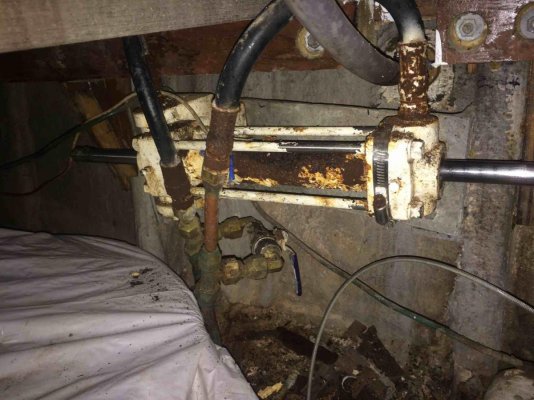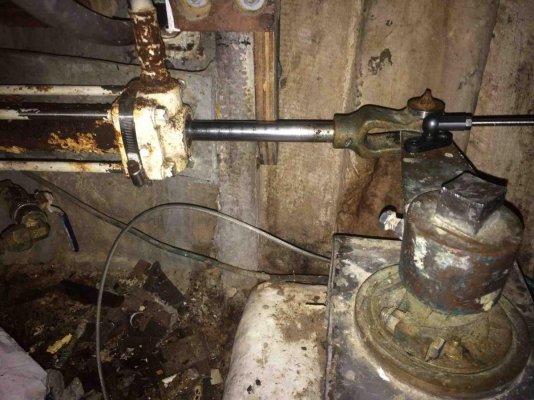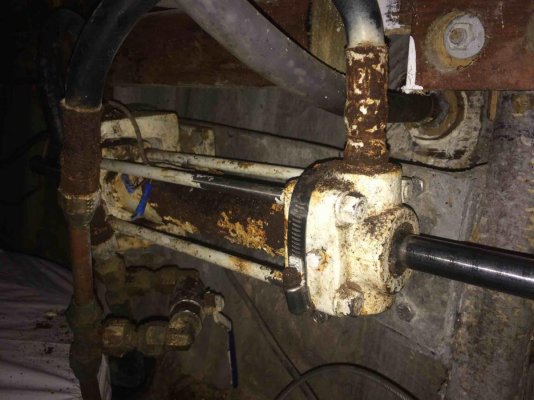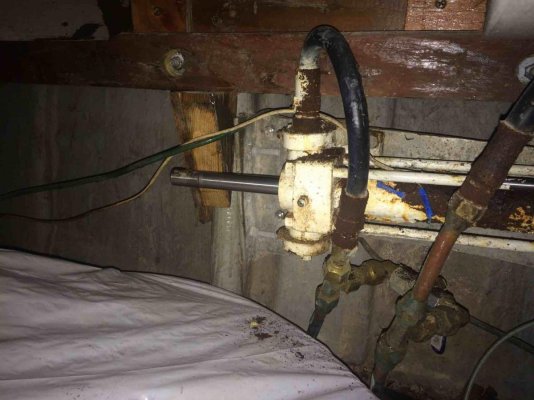I just bled my system last weekend as part of my spring commissioning chores. This chore is not normally required but caused by my own stupidity - another story. My system has the purge valves which are opened by loosening a couple screws on a junction and bleeders on the slave cylinder, the one at the back of the boat that turns the rudders. I'm surprised your slave cylinder doesn't have bleed screws, one at each end. Look again.
With 35psi on the system and purge valves open, turning the helms the required number of turns caused no fluid to leave the system. Opening the bleeders on the slave cylinder caused a quick 'pfft' of air followed by a slow ooze of fluid that was easily stopped by tightening the bleed screw. I had an oil absorbing towel ready but a shop paper towel would have done the trick. No muss, no fuss. It takes time but was surprisingly easy.
Good luck!





